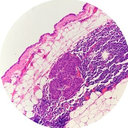Induction of apoptosis by buckwheat trypsin inhibitor in chronic myeloid leukemia K562 cells.
Parole chiave
Astratto
Buckwheat is an ancient and specialty grain in China. Due to its unique chemical and bio-activity components, buckwheat has been found to have many uses in food products and medicine. However, very little is known about the toxicity of protease inhibitors from buckwheat. Here, the possible effects of a recombinant buckwheat trypsin inhibitor (rBTI) on the induction of apoptosis of the human K562 cell line were investigated by MTT (3-[4,5-dimethylthiazol-2-yl]-2,5-diphenyltetrazolium bromide) assays and flow cytometric analysis. MTT assay showed that rBTI could specifically inhibit the growth of K562 cells in a dose-dependent manner, but there were minimal effects on normal human peripheral blood mononuclear cells (PBMCs). Furthermore, comparison the effects of rBTI on K562 cells with those of negative control (BSA and the complex of BSA and rBTI) revealed that rBTI was highly toxic to K562 cells, and BSA hardly had any inhibition on proliferation in K562 cells. The analysis of flow cytometric indicated that the apoptosis of K562 cells were 31.0%, 32.8%, 35.3% and 52.1% after treated by rBTI in range of 12.5-100 microg/ml, respectively. The results suggested that rBTI can induce apoptosis of K562 cells and that it might be a potential protein drug of the trypsin inhibitor family.






